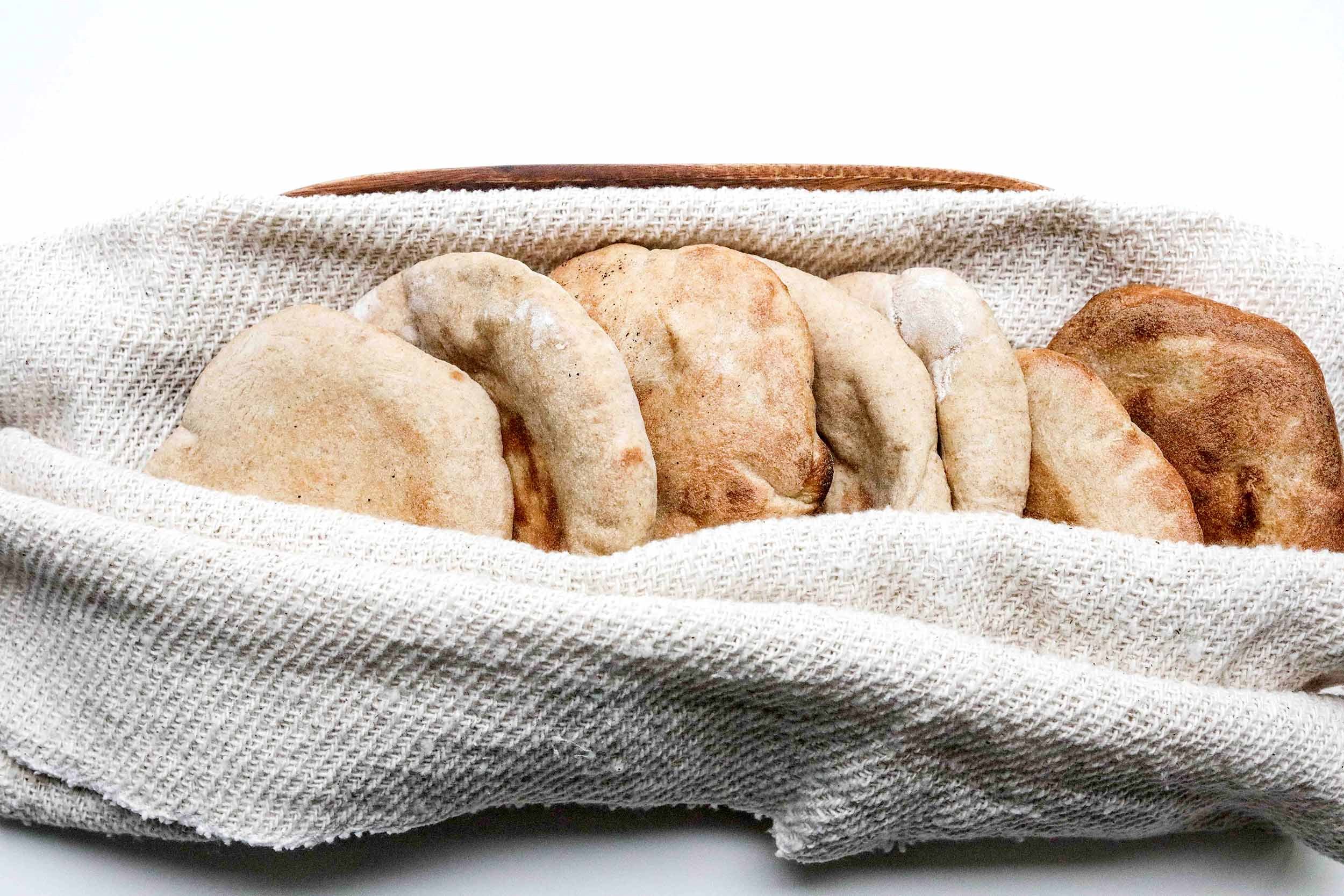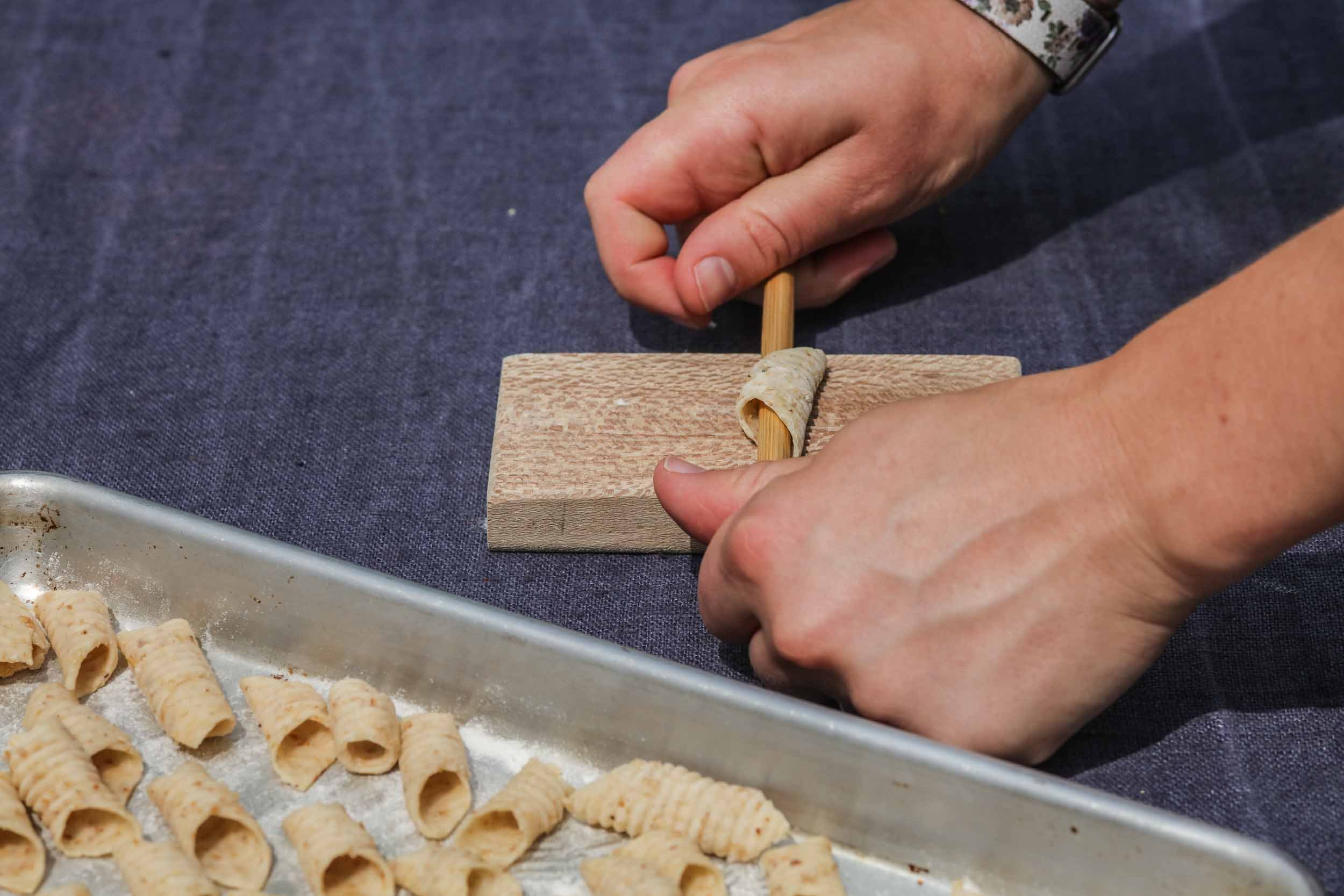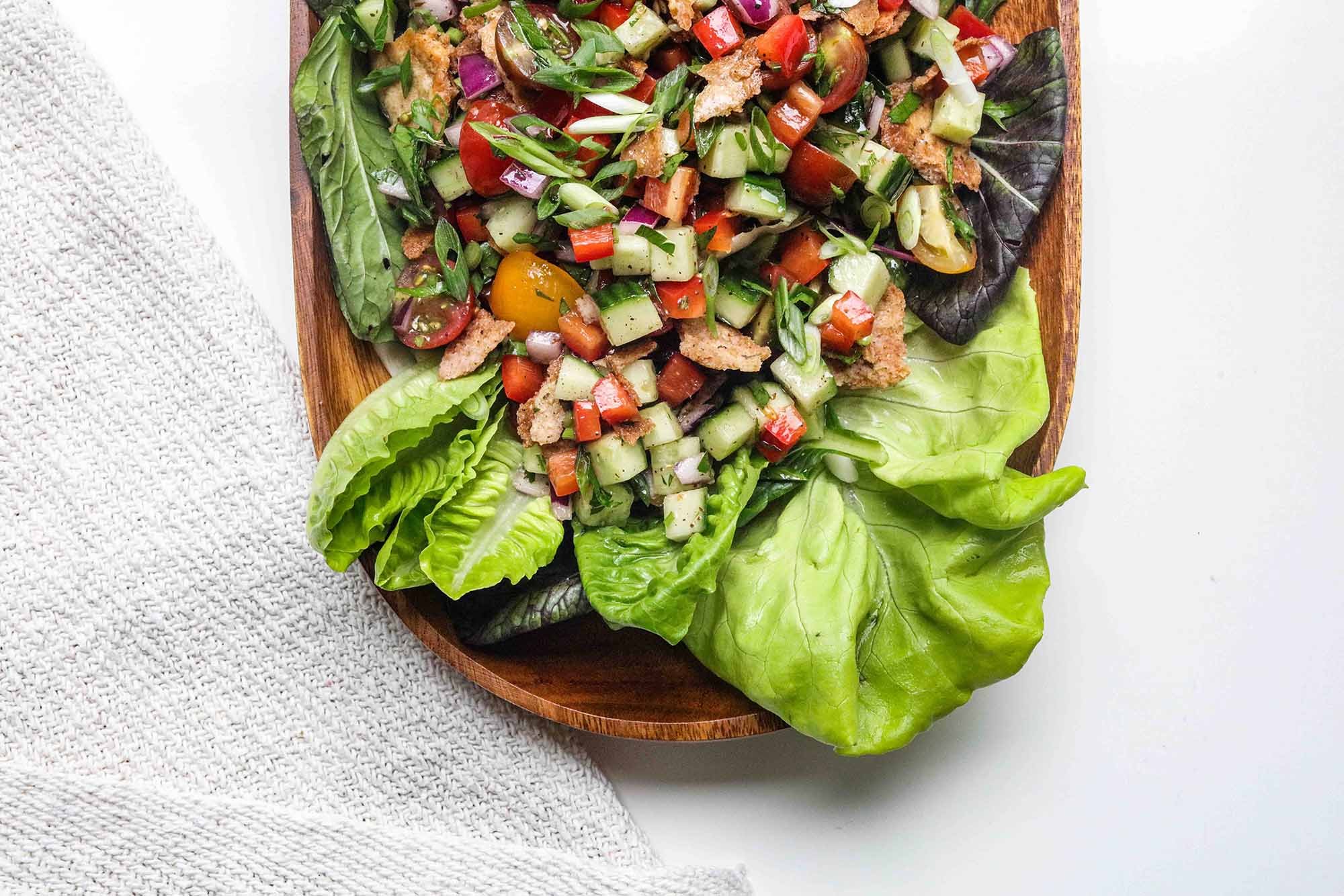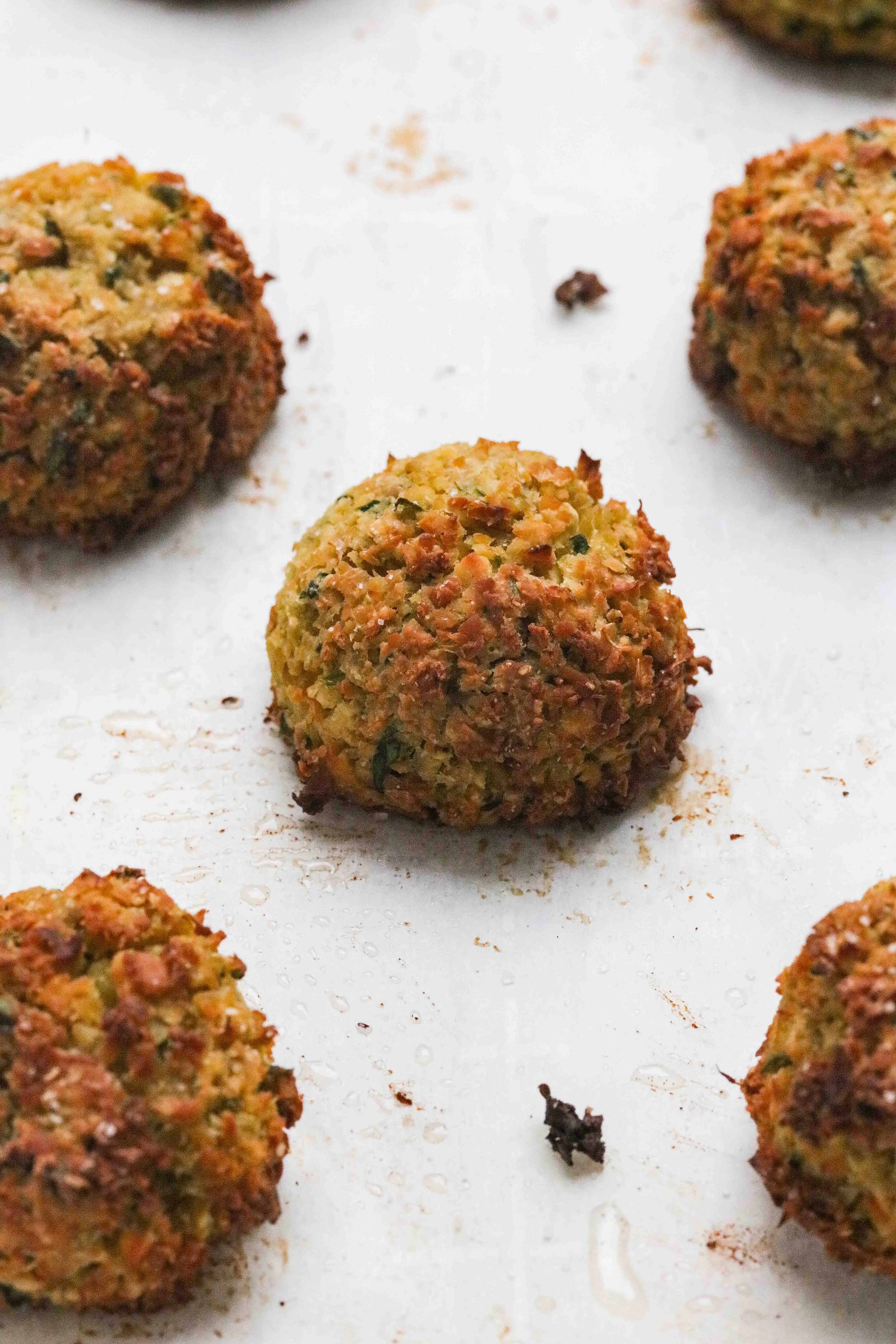Homemade Pita Bread

makes 8 pitas
250g (2 cups) bread flour, plus more for dusting
200g (1½ cups) whole-wheat flour
9g (1½ tsp.) salt
25g (1 Tbsp.) maple syrup or honey
20g (2 Tbsp.) olive oil
5g (2 tsp.) instant yeast
300g (1¼ cups) warm (80°F) water
Place the flours and salt into a bowl and mix to combine. In another bowl, whisk together the maple syrup, olive oil, yeast, and water. Add liquid ingredients to the flour mixture and stir into a shaggy mass.
By hand or using a stand mixer with a dough hook attachment, work the dough into a ball and then knead until smooth. Transfer the dough to a lightly oiled bowl; cover with plastic wrap or a clean kitchen towel. Allow the dough to rise until it has roughly doubled in size, about 1 hour.
Place a rimmed baking sheet upside-down on an oven rack and preheat oven to 500°F.
Transfer the dough to a lightly floured work surface and portion it into 8 pieces. Flatten one portion with your palm, then roll it into a circle roughly 6–8 inches across and 1⁄4 inch thick. Place the circles on a lightly floured baking sheet and cover with a clean kitchen towel to rest for 5 minutes.
Transfer 3 or 4 rounds to the preheated baking sheet. Bake for about 5 minutes on one side until they have puffed up, and then carefully flip over and bake for 1 or 2 minutes more.
Remove from the oven and wrap in a clean kitchen towel. Continue with the remaining pitas until all are baked. Serve warm.
Store leftover pitas in an airtight container and make the day-old pita into pita chips for fattoush or simply as crackers to serve with dips such as babaganoush, muhammara, or hummus.
Many pita recipes do not include whole-wheat flour. However, it’s a great way to incorporate whole grains and give the bread a deeper flavor profile. While you can purchase flour from any location, it’s a great item to introduce local grains (either pre-milled flour or milled at home) into your repertoire.
Stephanie has worked in the hospitality industry for over a decade. A graduate of CIA. NYU, and Maryville University she now oversees online programs for Auguste Escoffier School of Culinary Arts: Plant-Based Culinary Arts and Holistic Nutrition & Wellness. She also works with the Osher Center for Integrative Health at University of Cincinnati, teaching food as medicine principles. When she is not working or researching, Stephanie is an avid painter and enjoys traveling and hiking with her husband, Nick, and three rescue dogs.





